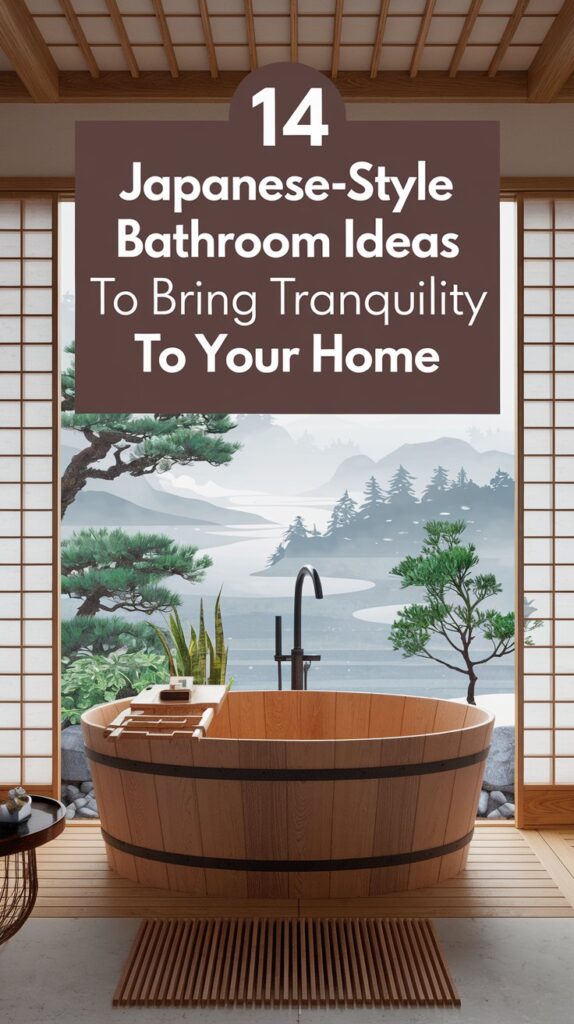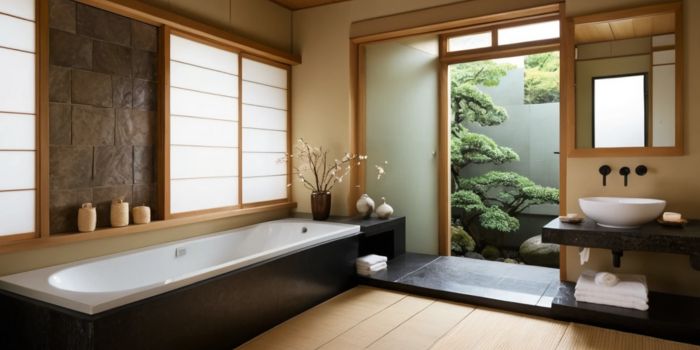Japanese bathroom ideas blend minimalism with natural beauty. Inspired by traditional onsen baths, this design features soothing wooden surfaces and stone textures, along with calming neutral tones. Whether you choose a full remodel or subtle Zen touches, this guide offers ways to create spaces that inspire relaxation and mindfulness.
Discover layouts, elegant soaking tubs, and clever built-ins that maximize space without sacrificing beauty. Each idea embodies a simple approach to achieving balance in your bathroom.
Ready to create your own peaceful oasis? Dive into the details and infuse your space with the essence of Japan today!
1. Soaking Tubs
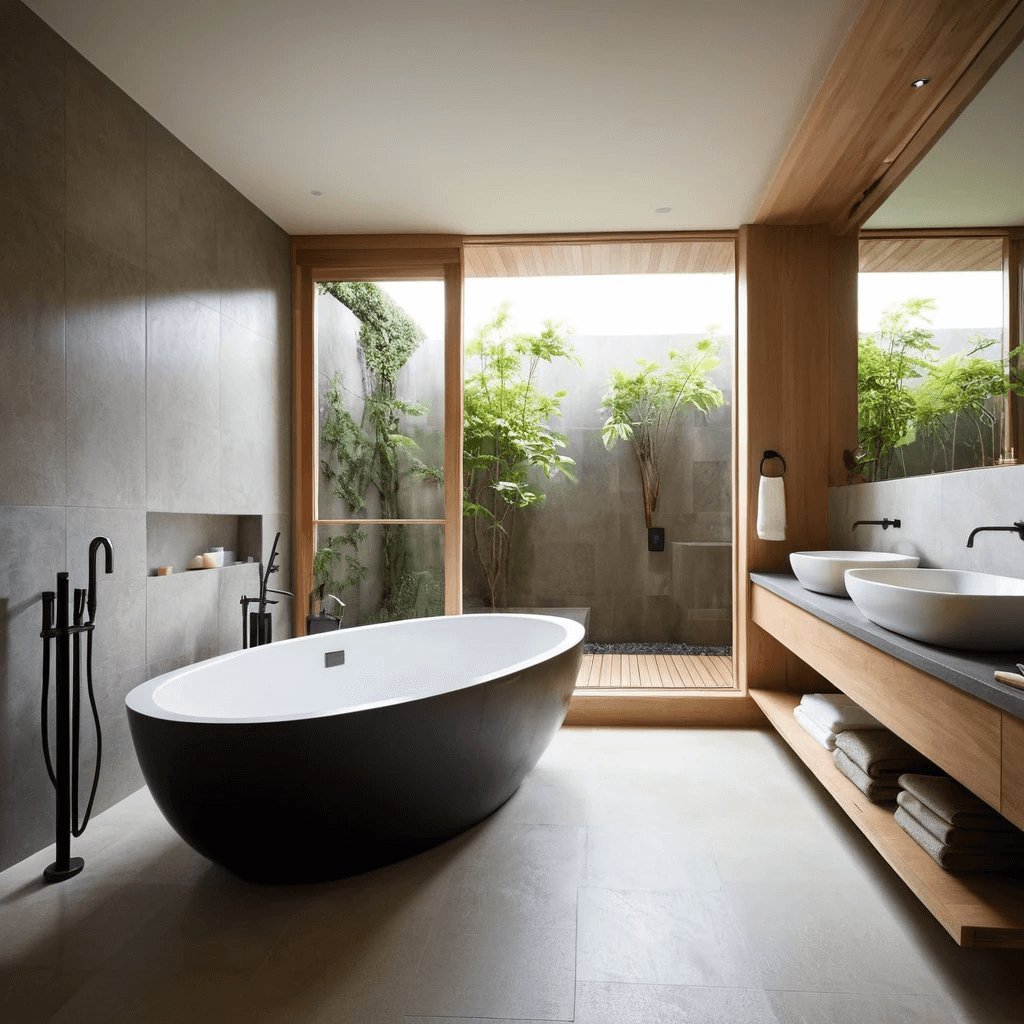
Japanese bathrooms often feature deep soaking tubs. These tubs allow for full-body immersion, creating a relaxing experience. Many come with comfort features, transforming your bathroom into a spa-like retreat.
Deeper than standard bathtubs, these soaking tubs offer complete body coverage. Their depth enhances relaxation and may relieve muscle tension and stress. Thus, they are a valuable addition to any household bathroom.
Moreover, the soaking tub serves as a stylish focal point in bathroom design. It provides a luxurious bathing experience while adding a unique cultural touch. This blend makes it a perfect fit for Japanese-style bathroom ideas.
2. Natural Materials
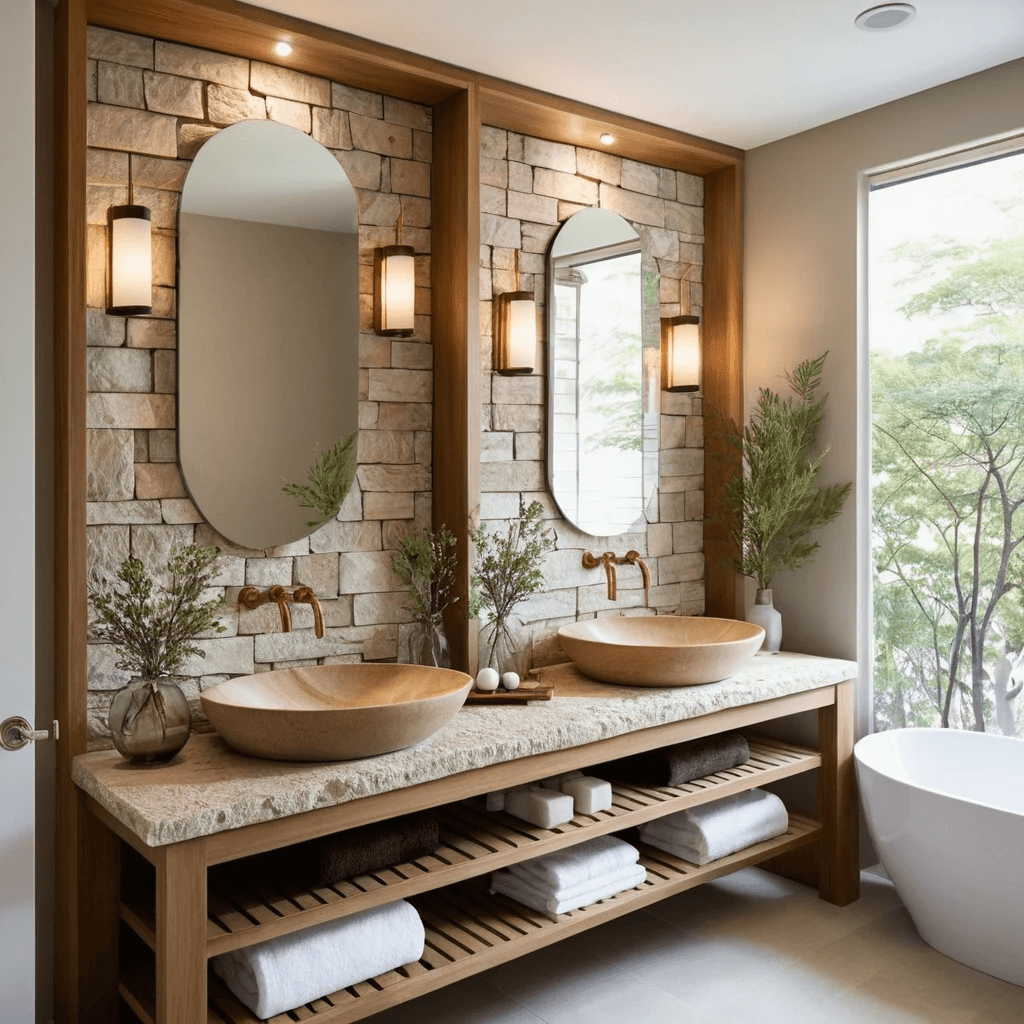
Using natural materials such as wood and stone in the bathroom introduces nature into the space, giving it a cozy ambiance.
Not only is wood aesthetically pleasing, but it withstands the test of time, making it a wise choice for bathroom vanities and shelving. Stone tops and tiles are timelessly classy.
Wood and stone together can create a spa atmosphere in the bathroom. These materials suit the simplicity and calmness of a Japanese-style bathroom.
3. Minimalist Design
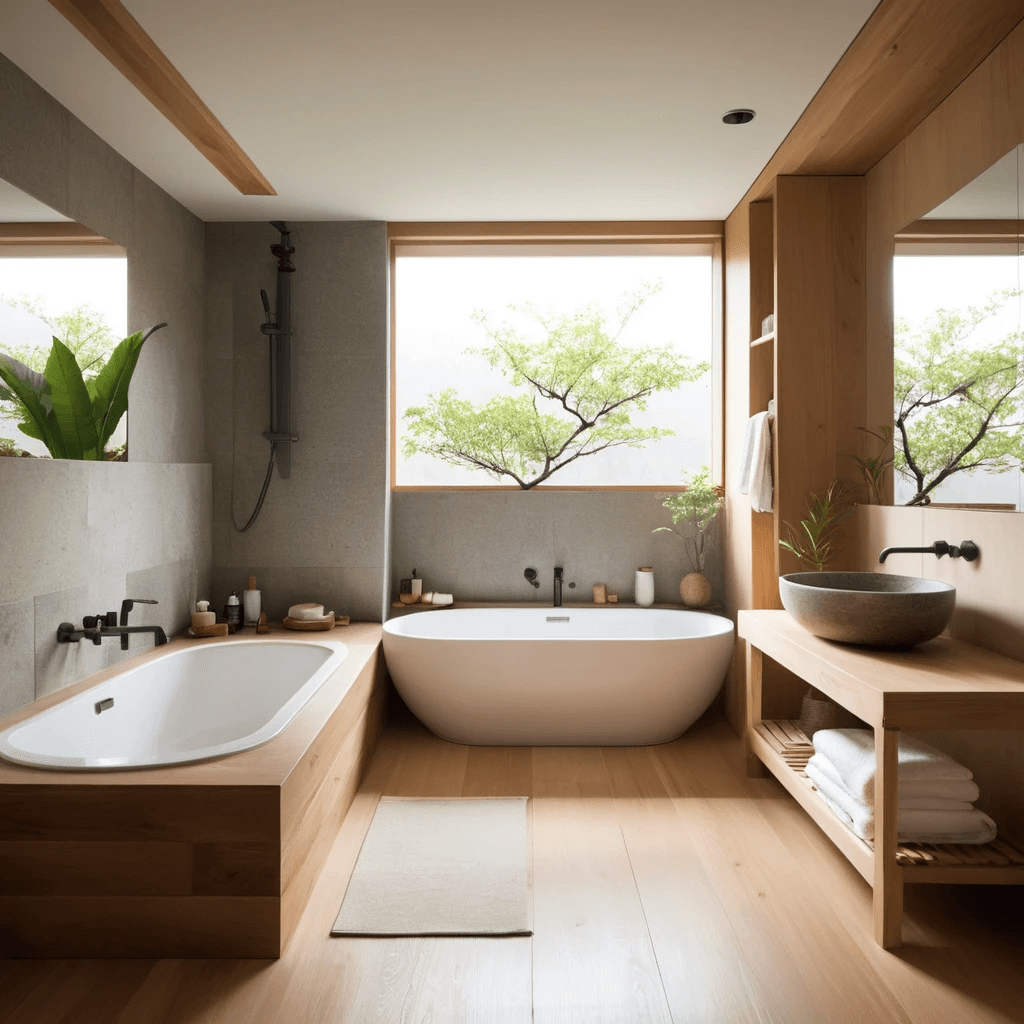
Japanese-style bathrooms focus on simplicity and function. They create a peaceful atmosphere with clean lines and minimal decor. Natural materials like wood and stone add an earthy element, enhancing the soothing feel of the space.
A soaking tub, or ‘ofuro,’ is essential in these bathrooms. Typically deep, it serves as the visual focal point. Designed for soaking, it embodies minimalism. Often made from natural materials, it magnifies the serene ambiance.
Light plays a crucial role in a minimalist bathroom. Soft, diffused light makes the space more inviting. Use hidden sources and fixtures with clean designs to maintain an uncluttered look, aligning with Japanese aesthetics.
4. Sliding Doors
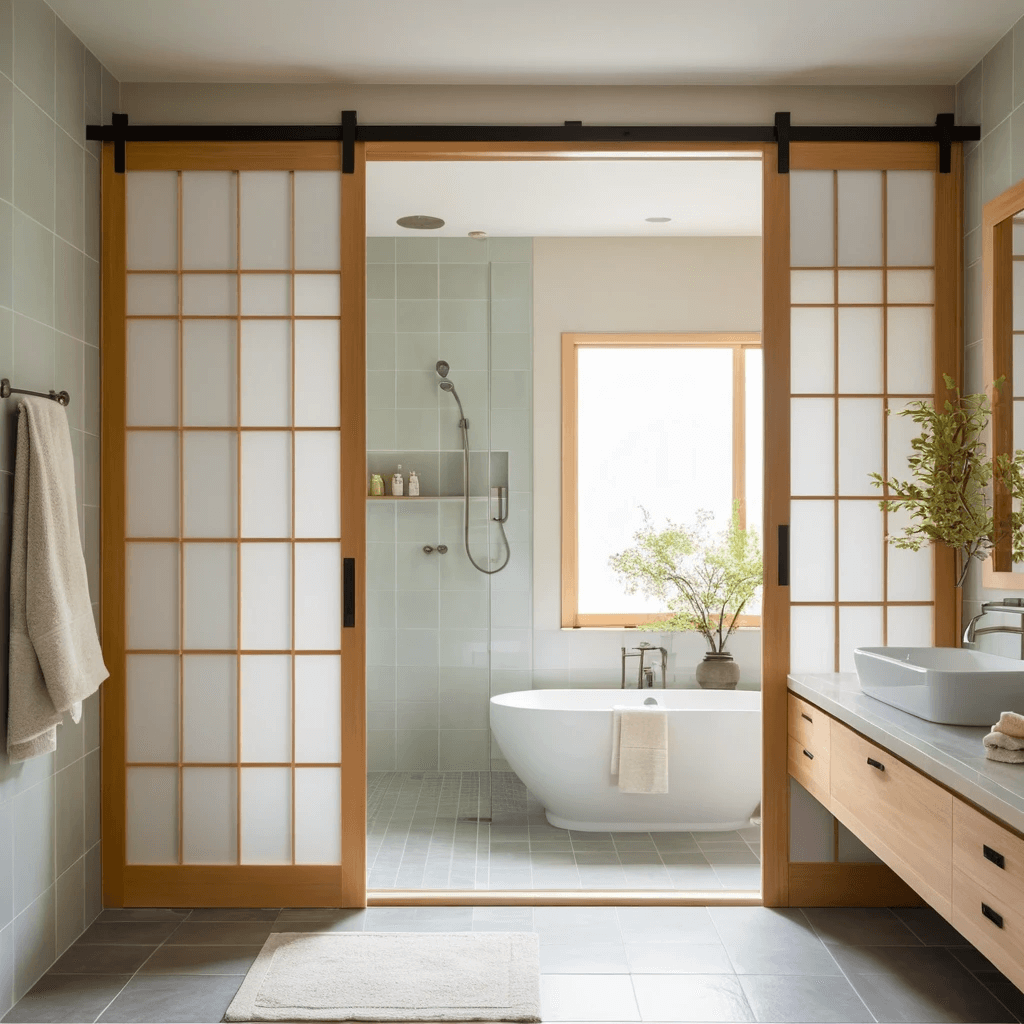
Sliding doors, or shoji, save space in a bathroom. These doors open and close without swinging out, making them ideal for tight spots.
Shoji doors bring a traditional Japanese feel to your bath. Mostly made with wooden frames and translucent paper, these doors produce soft, diffused light that casts a tranquil atmosphere.
In addition to their beauty, Shoji doors are wonderfully easy to maintain. Lightweight and reasonably sturdy, they can withstand cleaning and a good deal of use. Thus, making them a common choice in bathrooms.
5. Bamboo Accents
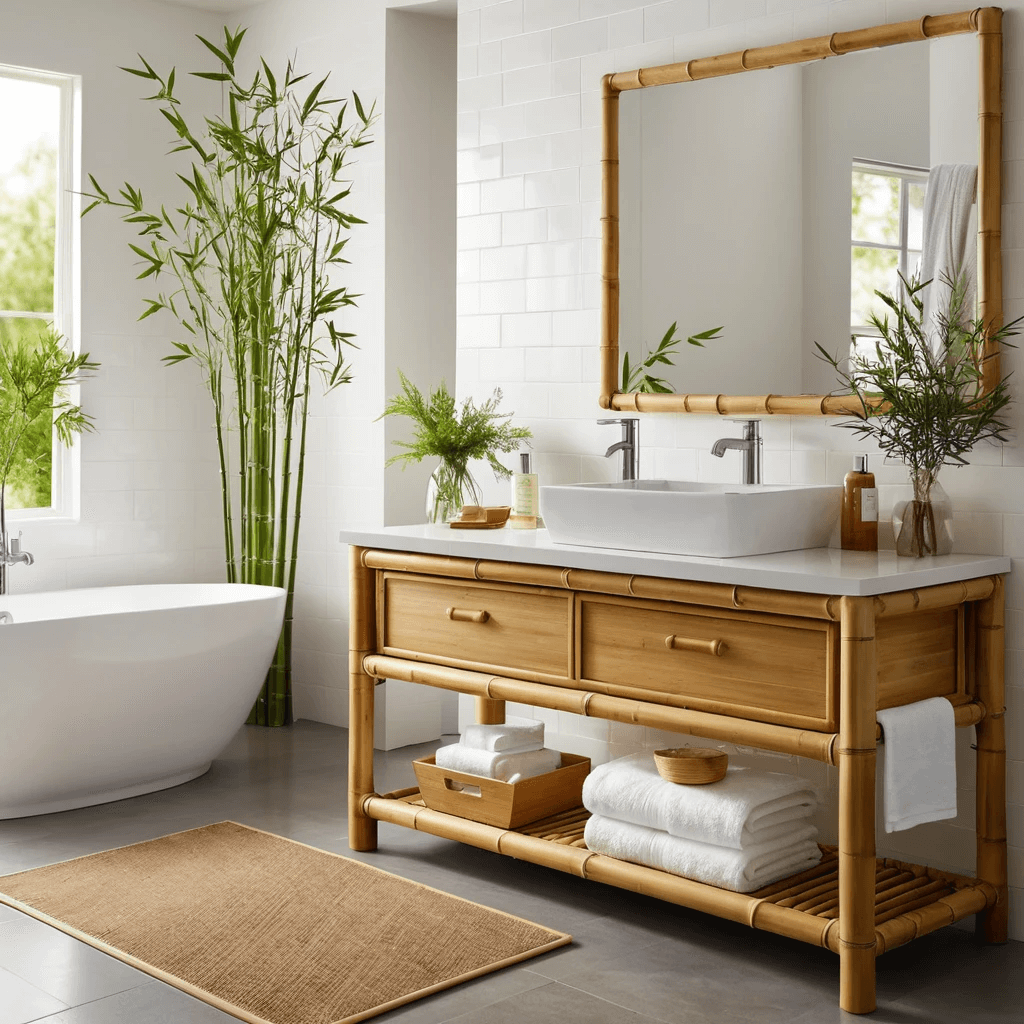
Bamboo in your bathroom brings a touch of nature and eco-friendliness. It’s water-resistant and durable, making it perfect for this space. Small items like soap dishes, toothbrush holders, and bath mats add an earthy feel. They turn your bathroom into a serene sanctuary.
Bamboo fits beautifully in a Japanese-style bathroom, emphasizing natural elements. For larger pieces, like shelves and towel racks, bamboo is also ideal. It offers a unique texture and color that enhances an organic theme. Plus, bamboo is lightweight yet strong, making it an excellent choice for all kinds of bathroom fixtures.
6. Zen Garden
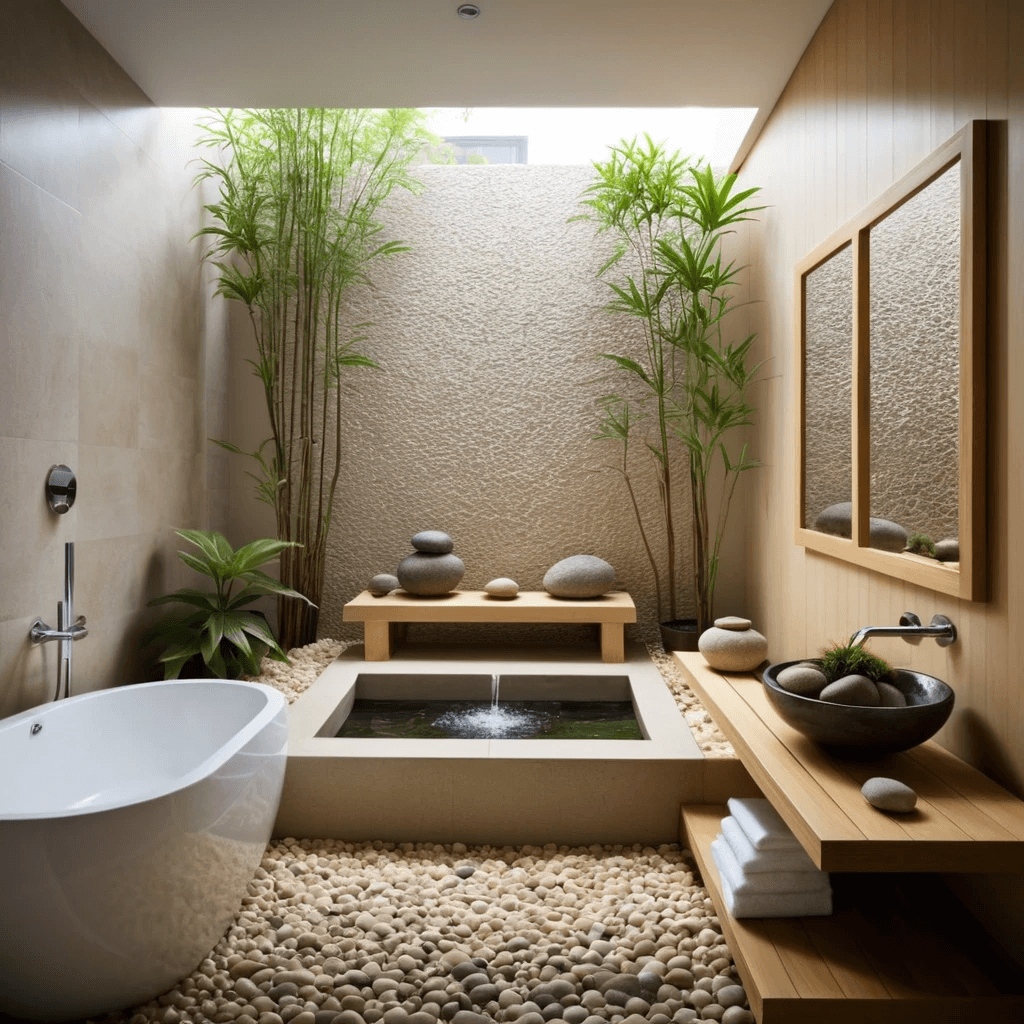
You can create a small Zen garden in your bathroom. This space will offer tranquility and a touch of nature. Use a few simple ingredients: smooth stones, sand, and some plants.
Consider adding a small fountain. The gentle sound of flowing water will enhance the calmness and connect you to nature.
Lastly, include natural materials like bamboo or wood. These accessories will bring the Japanese style to your bathroom. They create a peaceful enclosure, complementing the other features beautifully.
7. Neutral Colors
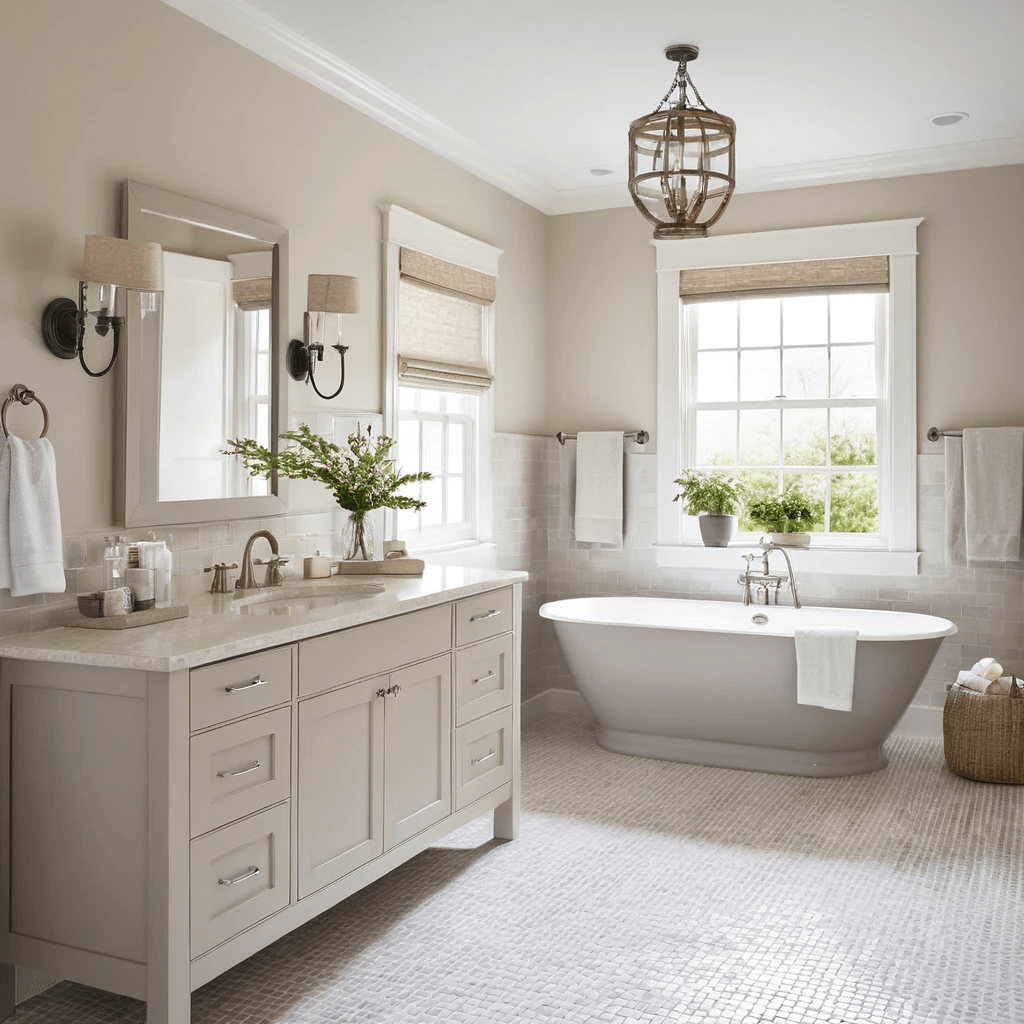
Beige, white, and gray neutrals create a calm, inviting bathroom. These colors reflect natural light, making the space feel brighter and airier. Neutral shades easily complement various styles and accessories.
They provide a perfect base for both modern and traditional designs. Keeping these colors as the core allows for gradual changes over time.
You can update the look with new accents and accessories without a major overhaul. This approach makes periodic changes simple and stress-free.
8. Stone Sinks
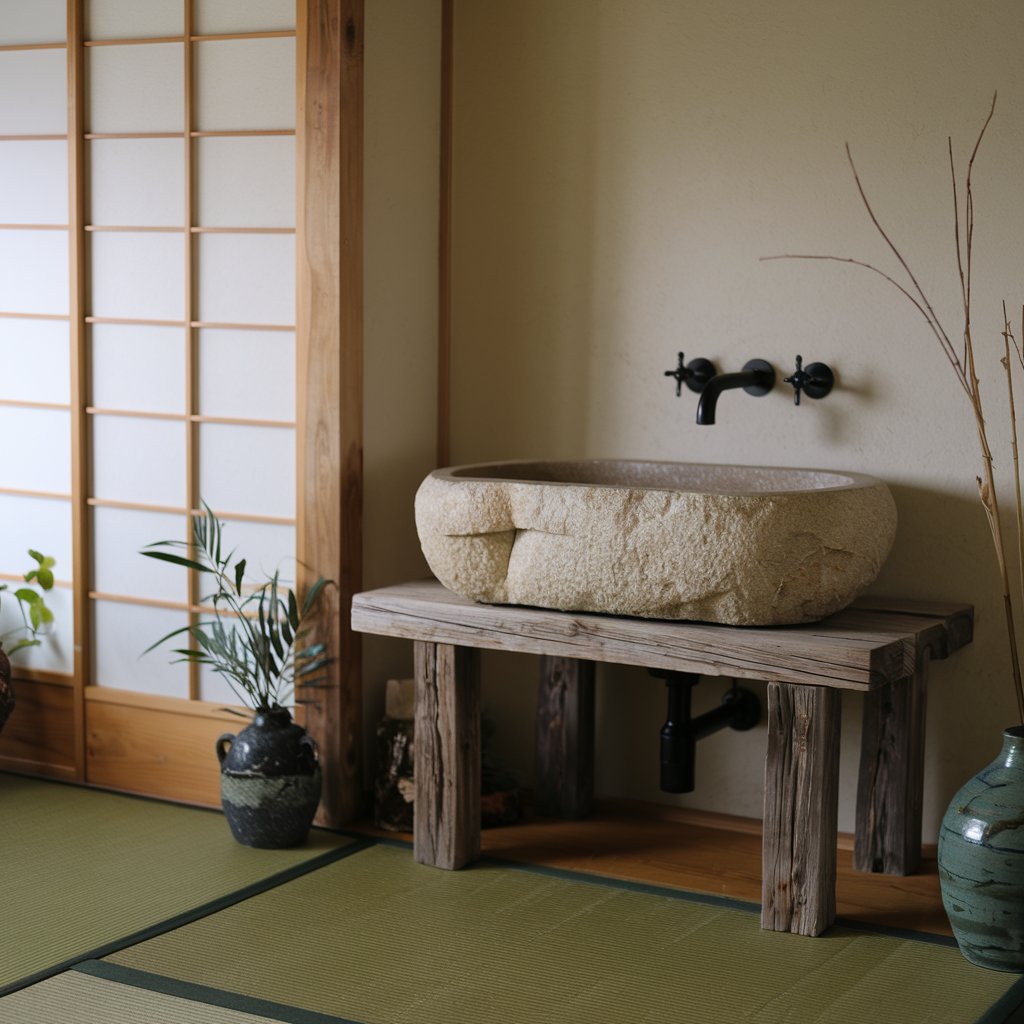
Stone sinks bring natural beauty to bathrooms, fitting seamlessly with Japanese designs. Their unique textures and colors connect the space to nature, enhancing aesthetics.
These sinks are not just attractive; they are also durable. Stone’s toughness keeps them looking new for a long time, making them ideal for those who want style and practicality.
Installing a stone sink adds a classy touch, elevating the bathroom’s look. This sophistication aligns perfectly with the simplicity and elegance of Japanese bathroom design.
9. Wooden Shelves
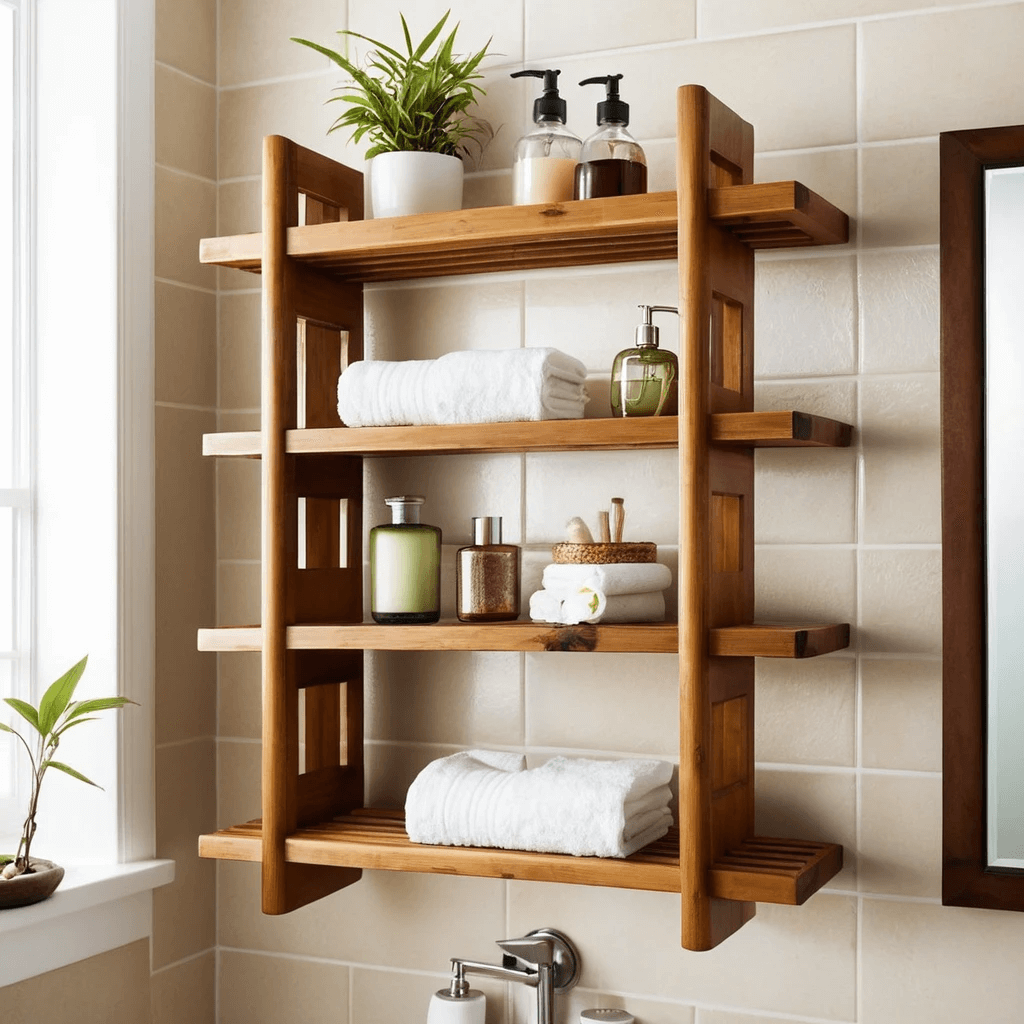
Wooden shelves in your bathroom offer stylish storage. They hold towels, toiletries, and more while enhancing the natural look.
In a Japanese-style bathroom, these shelves add to the serenity. Their natural wood tones complement bamboo mats and stone accents, boosting overall beauty.
Installing wooden shelves is a simple DIY project. With basic tools, you can do it yourself. Choose unfinished or lightly stained wood for an authentic look. Make sure to seal it well to protect against humidity.
10. Tatami Mats
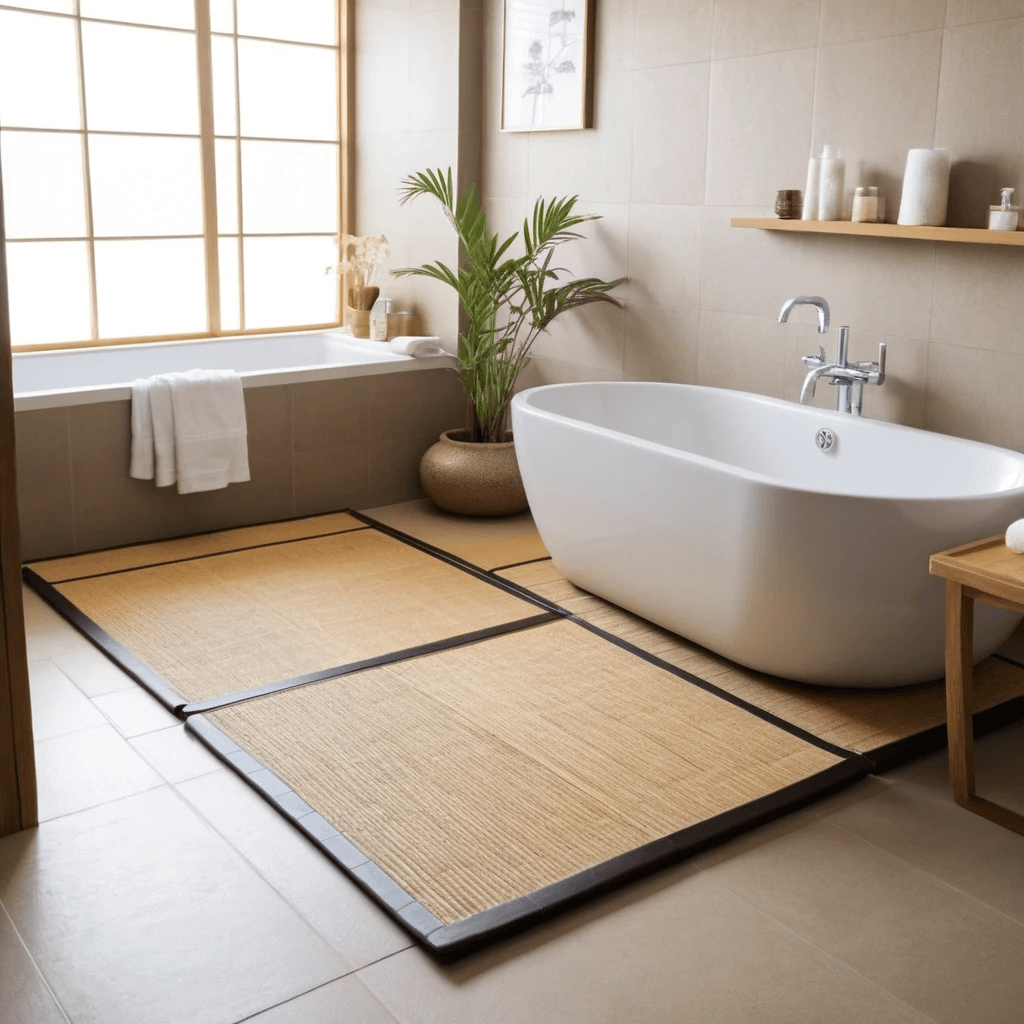
Tatami mats bring authentic Japanese style to your bathroom. Made from natural materials like rice straw, they feel cozy and soft underfoot. Their unique texture helps balance humidity, keeping the room fresh and warm.
Adding tatami mats creates harmony and tranquility. Traditionally, they offered comfort and durability in Japanese homes. They’re easy to clean, making them a hygienic choice for bathroom decor.
Available in various shapes and sizes, tatami mats allow for personal expression. They fit seamlessly into any decor, whether traditional or modern. Their natural color and texture add a touch of sophistication to your space.
11. Rain Showers

Rain showers soothe by mimicking natural rainfall. They can transform your bathroom into a peaceful retreat, perfect for unwinding after a long day. A key benefit of these showers is their even water distribution.
This ensures a lovely, uniform experience, enhancing comfort. Incorporating rain showers into Japanese-style bathrooms blends function with beauty. The gentle water flow creates a calming, minimalist space that is also stylish.
13. Paper Lanterns
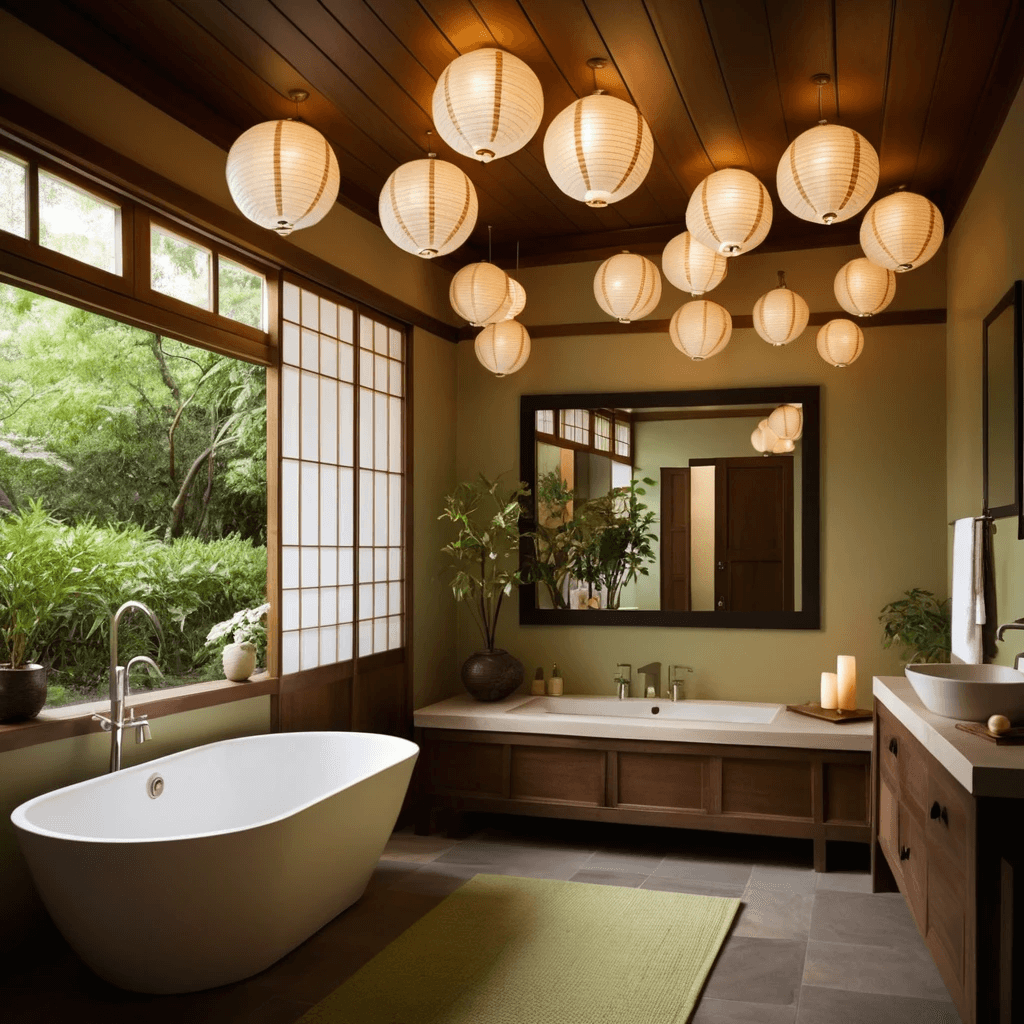
Paper lanterns cast a soft, warm light, soothing your bathroom and calming the atmosphere. They can be hung from the ceiling or placed on a shelf, adding a touch of traditional Japanese elegance.
Beyond their beauty, paper lanterns are energy-efficient. Many come with low-wattage bulbs, reducing electricity use. This makes them an excellent choice for homeowners seeking a green Japanese-style bathroom.
With paper lanterns, you have endless options. They come in various styles, designs, shapes, and sizes, allowing you to customize your decor. Whether you prefer minimalism or intricate details, you can find a lantern that enhances the ambiance of a Japanese-style bathroom.
14. Stone Floors
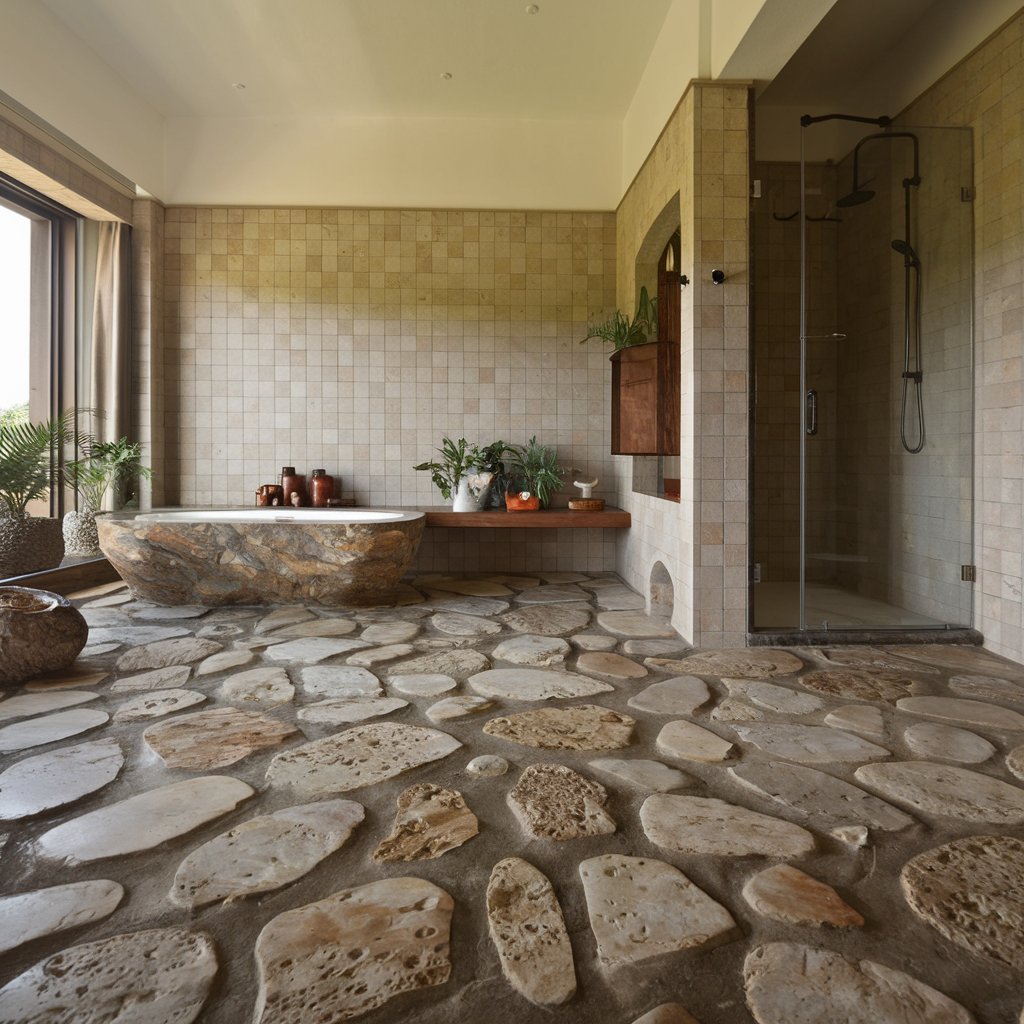
Later, it creates a calm, earthy feel in your hotel bathroom, with a touch of ruggedness. It can handle the moisture and pressure typical in bathrooms. Stone floors add a sense of luxury.
Using different stones like marble and granite gives a unique look. They can also be paired with other elements for a Japanese style.
Stone flooring is easy to clean and maintain, making it perfect for busy households. Even in the hottest months, it stays cool. In colder months, it can support underfloor heating.
15. Indoor Plants
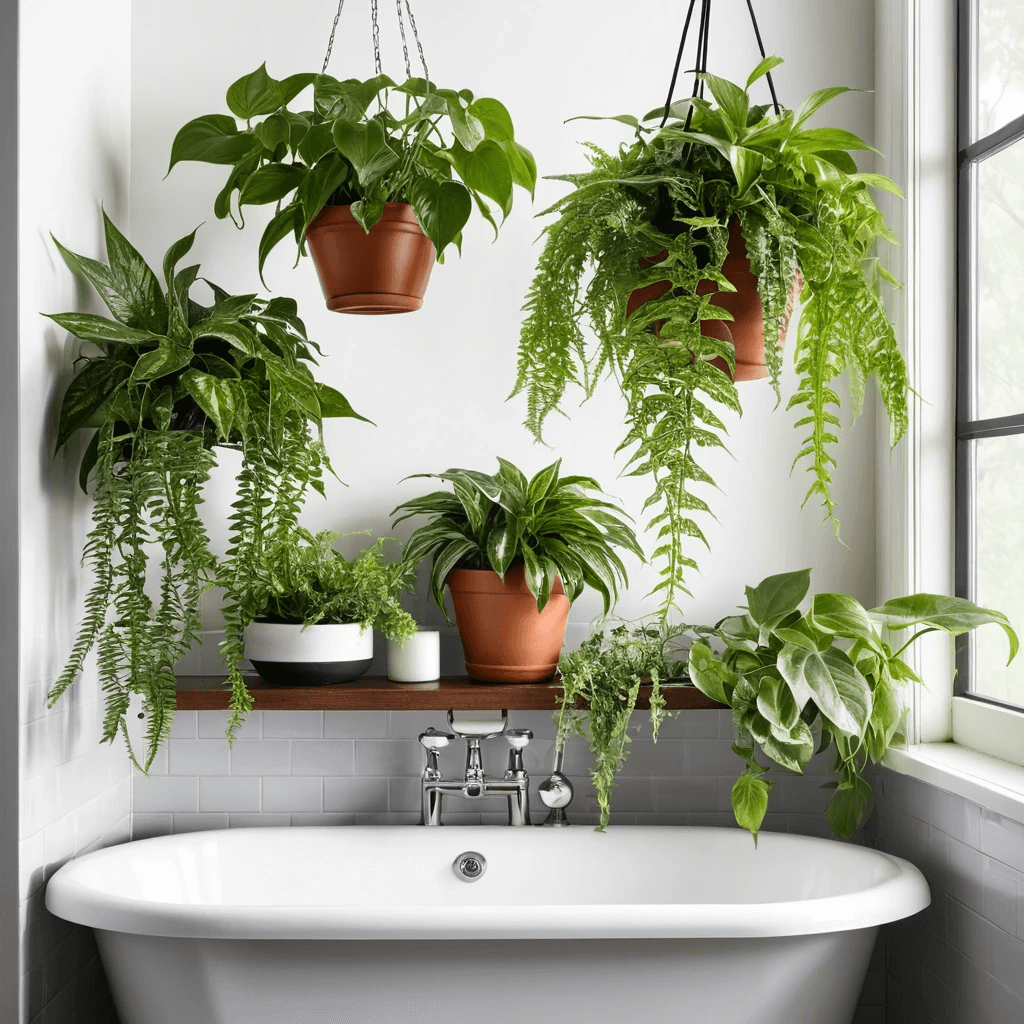
Adding indoor plants to the bathroom enhances its look and feel. Ferns and spider plants thrive in high humidity, making them ideal for a Japanese-style bathroom.
Beyond looks, these plants purify the air. A few small pots on counters or shelves can create a soothing, clean atmosphere.
Hanging plants are perfect for small spaces. They save floor space while adding greenery’s calming effect. Pothos and ivy are great options; they’re easy to care for and grow well indoors.
Conclusion
Bringing Japanese-style elements into your bathroom can create a peaceful and calming environment. From natural materials to minimalist designs, these ideas can transform your bathroom into a serene retreat. Try incorporating a few of these tips to enjoy a tranquil and relaxing space in your own home.
Questions & Answers
Question: What is a Japanese soaking tub?
Answer: A Japanese soaking tub is a deep tub that allows for full-body submersion, enhancing relaxation and relieving muscle tension. It is designed to provide a luxurious bathing experience.
Question: What materials are recommended for achieving a Japanese-style bathroom?
Answer: Natural materials like wood and stone are recommended for a Japanese-style bathroom. These materials create a warm, inviting atmosphere and emphasize simplicity and tranquility.
Question: What role does lighting play in a minimalist, Japanese-style bathroom?
Answer: Lighting plays an essential role by using soft, diffused light to create a peaceful and inviting atmosphere. Hidden light sources or fixtures with clean designs help maintain an uncluttered look.
Question: What are shoji doors and why are they beneficial for bathrooms?
Answer: Shoji doors are sliding doors with wooden frames and translucent paper, bringing a traditional Japanese feel. They save space, create a peaceful ambiance, and are easy to maintain.
Question: How can bamboo be incorporated into a bathroom design?
Answer: Bamboo can be used for accents like soap dishes, toothbrush holders, bath mats, shelving, and towel racks. It is durable, water-resistant, and adds a natural touch to the bathroom.
Question: What elements can be used to create a Zen garden in a bathroom?
Answer: Elements like smooth stones, sand, green plants, and small water features can be used to create a Zen garden. Adding bamboo or wooden accessories enhances the serene atmosphere.
Question: Why are neutral colors recommended for a Japanese-style bathroom?
Answer: Neutral colors like beige, white, and gray create a peaceful and welcoming atmosphere. They work well with natural light and provide a versatile backdrop that complements various styles.
Question: What are the benefits of installing a stone sink in a bathroom?
Answer: Stone sinks bring a natural, elegant vibe and are durable, making them a practical choice. They enhance the bathroom’s aesthetic and align with the simplicity and elegance of Japanese design.
Question: What are tatami mats and how do they benefit a bathroom?
Answer: Tatami mats are made from natural materials like rice straw and provide a soft, comfortable flooring option. They help regulate humidity and add an authentic Japanese touch to the bathroom.
Question: What are the benefits of using rain showers in a bathroom?
Answer: Rain showers create a calming effect by simulating natural rainfall, providing even water distribution and a more enjoyable showering experience. They complement the minimalist design of a Japanese-style bathroom.
